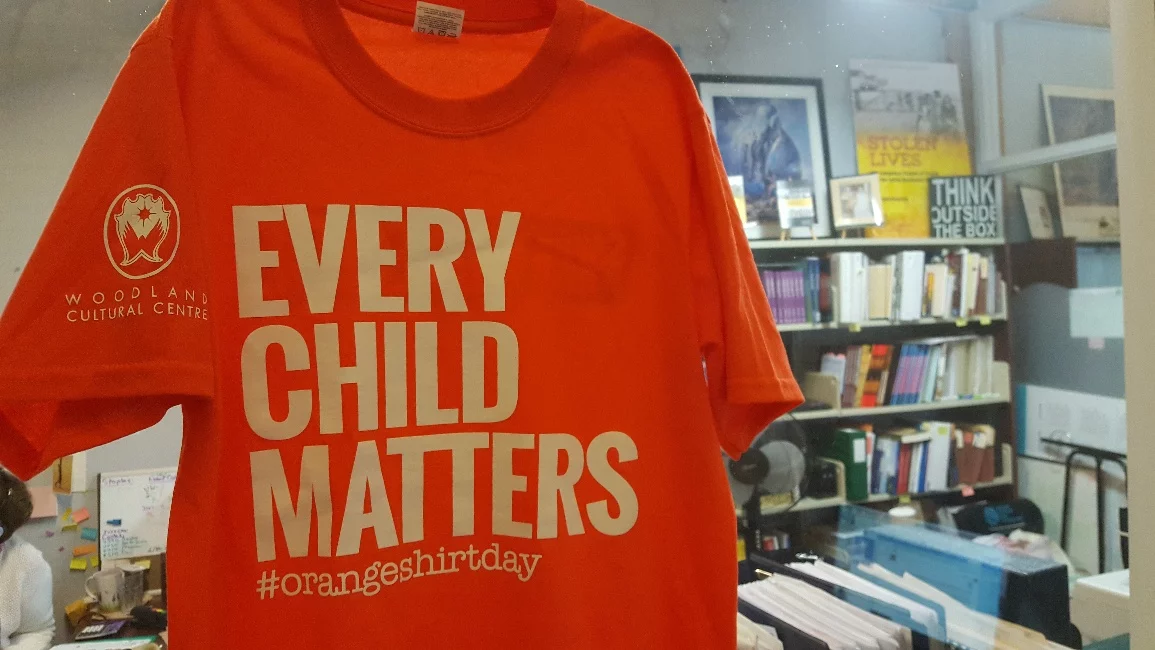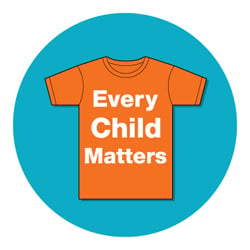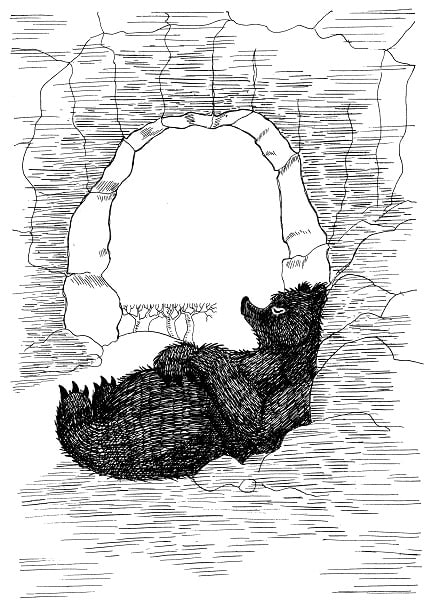some words before the video
As your school commemorates Orange Shirt Day this year, we hope these 5 resources and teaching ideas will equip you to teach your students (and colleagues) about Canada's Residential Schools, and inspire and empower students to create a meaningful response.
“September 30th has been declared Orange Shirt Day annually, in recognition of the harm the residential school system did to children's sense of self-esteem and well being, and as an affirmation of our commitment to ensure that everyone around us matters.”
(Orangeshirtday.org)

Below you'll find 5 teaching ideas to help you and your students connect to, learn from and respond to Phyllis' story and to the history and legacies of Residential Schools. For 5 more ideas, you can also read our post for Orange Shirt Day 2017 here.
Teaching Idea #1: Understanding the Symbolic Orange Shirt
(Grades K-4); 30-45 minutes

This Orange Shirt Day, invite Indigenous voices into your classroom(s) so that students gain an understanding of the diverse civilizations that lived and continue to live on Turtle Island. Look for stories of Indigenous writers, art pieces, songs, invite an Elder into your classroom to enable students to connect to the humanity and diversity of Indigenous peoples and civilizations since time immemorial to today. See Dr. Pamela Toulouse's post for more on Being a Conscious Ally to learn more.
- Discuss with your students: What makes you, you? Who and what things, stories or traditions would you say are important to you? What do you have that reminds you of - or helps you feel close to - your favourite place and favourite people?
(Remind students that all people have arts, stories, histories, etc. that are important and help us feel included, and make us unique and special.) - Explore a variety of stories, arts, histories, knowledge, inventions and customs that originate from the Indigenous peoples who share the land and territories on which your school is located so students can connect to or deepen their learning about others' experiences.
- If you have a student who self-identifies as First Nations, Métis or Inuit, ask their parents or care givers if they would like to share about something that's important to them;
- Ask your board’s Indigenous learning coach/coordinator or your board’s website for suggested resources;
- Go to your local band or Friendship Centre's website,
- Go to your province's First Nations, Metis, Inuit Education Association website,
- Check out CBC Kids' Indigenous resources
- Take a look at Indigenous owned and run Goodminds Bookstore.
- Read OISE Librarian Desmond Wong's curated K-12 book suggestions here
- Ask students how together you can make sure that all students can feel welcome and be themselves. What do students notice about what’s special to the authors/artists/inventors/people they learned about?
- Ask students how you can all work together to help each person in the class or school feel welcome, special and important. What should the classroom look like, sound like and feel like?
Teaching Idea # 2: Responding to Phyllis’ Story
(Grades 3-6); 30-45 minutes
Screen capture of orangeshirtday.org website
- Discuss with your students: What makes you, you? Who and what things, stories or traditions would you say are important to you? What do you have that reminds you of - or helps you feel close to - your favourite place and favourite people?
(Remind students that all people have arts, stories, histories, etc. that are important and help us feel included, and make us unique and special.) - Share a part of Phyllis' story: Phyllis is a girl from Stswecem’c Xgat’tem First Nation who grew up on Dog Creek Reserve (BC); take a look at the Native-Land.ca map to locate the traditional territory of the Secwepemcúl’ecw (Secwépemc).
- Visit the Orange Shirt Day website, read the first two paragraphs and the "Today" section of Phyllis’ story. Help students connect to her by sharing her photographs with students.
- Invite students to connect with Phyllis' story: What did having her orange shirt taken away mean to her? What does the shirt symbolize for her? Why do you think Phyllis shared this story? What sorts of things do people say and do to make others feel they don't belong? that they do belong? What can we do today to let Phyllis know that we've listened to her and are learning from her story?
- Ask students to create a response to learning Phyllis’ story, and to share that response with Phyllis.
Teaching Idea #3: Exploring Themes of Identity and Belonging
(Grades 5-9); 45-50 minutes

Introduce students to The Bear That Wasn’t, a story that invites us to think about the power of others’ perceptions, of institutions and of stereotypes in shaping our sense of identity, self-concept and belonging.
After watching the video or reading the story, discuss these connection questions using a variety of discussion strategies:
- Why do you think Frank Tashlin titled this story The Bear That Wasn’t? How did the factory officials and other bears define his identity? What were the consequences for the bear?
- How do you relate to the story of The Bear that Wasn’t personally?
- Listen to the story of Phyllis Webstad. How does Phyllis’ story connect to The Bear that Wasn’t?
- The bear re-discovered his identity when he entered into the cave. Where do you go to feel safe and reminded of who you are? What do you do that makes you feel at your best?
- If your classroom was a cave that reflected each of your students, what does your cave looks like, sound like, and feel like? How might you construct a classroom that reflects this?
Teaching Idea #4: Begin a Deeper Study of the History and Legacies of Residential Schools
(Grades 8-12 and with colleagues); 1-2 weeks
Take a look at three resources that we have created to help you teach about Residential Schools with your students:
1. Download or read our free resource book, Stolen Lives: The Indigenous Peoples of Canada and the Residential SchoolsThe French translation Vies volées: Les Peuples Autochtones au Canada et le régime des pensionnats is available now!
2. Teach the Stolen Lives Two-Week Unit Outline
3. Invite colleagues to learn together through the Stolen Lives Online Course, an interactive course featuring readings, teaching strategies, online dialogue, and 3 live video conference calls with the course facilitators, Elder Shirley John and Residential School survivor Theodore Fontaine. This course runs for 5 weeks beginning on October 17th, 2019. Participants must register separately; all participants will receive a print copy of the resource book.
Teaching Idea #5: Defining Meaningful Reconciliation on Orange Shirt Day
(grades 10-12); 60-75 minutes
Orange Shirt Day provides teachers and students an opportunity to consider how we respond with action after learning about the history of the Residential Schools.
- Ask students to work with a partner to create a working (i.e. unfinished) definition based on their personal experiences and understanding:
- What do you think the term “reconcile” means?
- What might reconciliation look like? Sound like? And feel like? (You may want to ask students to begin by thinking about a time when they had a falling out with a friend. What did they need to reconcile with their friend? What do we expect from others who have hurt us?)
- If you have established a reflective community for dialogue, invite students to also consider: What examples can they think of where authority figures or institutions have broken the trust of - or harmed - those they are intended to serve. What would it look like, sound like or feel like for the victims and perpetrators reconcile? What reparations would we expect from institutions such as schools, the government, religious communities? Does institutional wrongdoing warrant a different response than a personal falling out? If so, why?
- Gathering these threads together, invite students to share their working definitions and develop a whole class working definition for what reconciliation looks like, sounds like and feels like.
-
Watch the video below to hear Indigenous scholars, Elders, knowledge keepers and educators talk about how they define reconciliation
- After viewing the video, ask students to revisit and refine their working definitions, then discuss the following connection questions:
- How do the ideas shared in this video connect to, extend, and challenge your understanding of reconciliation?
- What is one commitment that you and your community can make to enable meaningful reconciliation to happen?
This day invites us to honour the stories of Residential School survivors and their communities, but also pushes us to take action. What can you, your class and your school do to enable a space where reconciliation can happen, not just on Orange Shirt Day, but throughout the rest of the year and beyond?
Tweet us with how you commemorate Orange Shirt Day on Twitter @FacingCanada. We’d love to see and learn from what you do!


